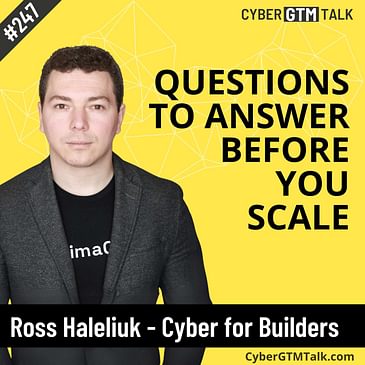Are your cybersecurity solutions truly addressing the market’s top concerns? Can early-stage startups convincingly meet the security demands of large enterprises? How does cultural background influence a cybersecurity leader’s success?
In this conversation, we discuss:
- Challenges faced by early-stage startups in aligning their products to market needs.
- Understanding the role and impact of diverse cultural backgrounds in cybersecurity.
- The significance of practical experience in founding successful security operations.
About our guest:
Ross Haleliuk, head of product at Lima Charlie and author of "Cyber for Builders", is a distinguished figure in cybersecurity, known for his profound insights into start-up ecosystems and operational challenges. His background and thoughtful opinions make him a valuable voice in the industry discussion.
Summary:
Join our host, Andrew Monaghan, as he explores with Ross Haleliuk the complexities and strategies driving today's cybersecurity market. Ross offers essential advice for startups and established companies aiming to succeed in this dynamic field. Tune in for invaluable perspectives that could revolutionize your go-to-market strategies!
Connect with Ross and explore more:
- Ross Haleliuk on LinkedIn
Follow me on LinkedIn for regular posts about growing your cybersecurity startup
Want to grow your revenue faster? Check out my consulting and training
Need ideas about how to grow your pipeline? Sign up for my newsletter.




